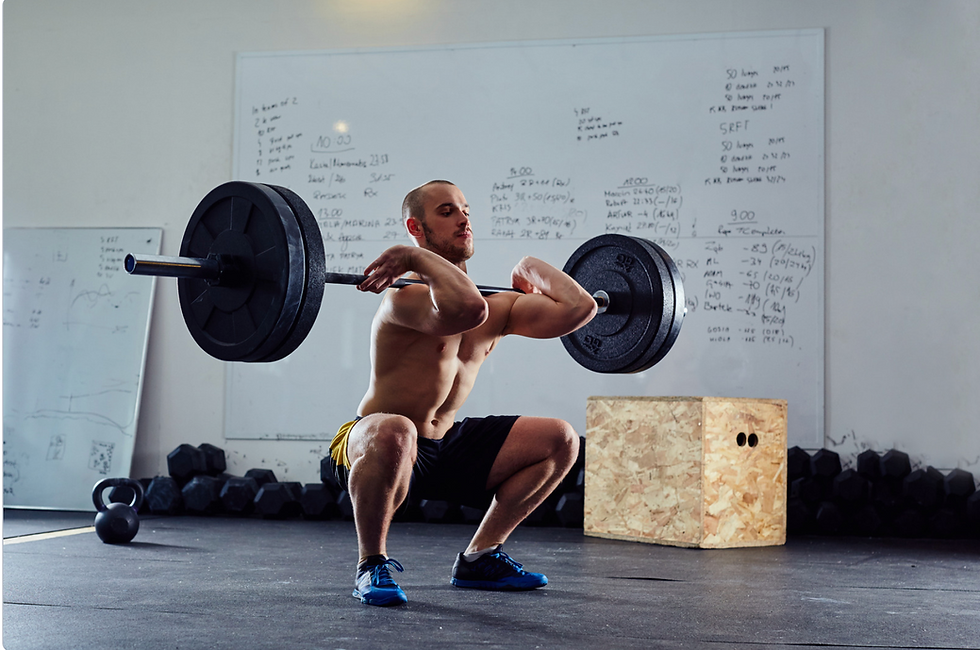
Front squats are an effective lower body exercise that offers a variety of benefits, especially for building leg strength, improving posture, and enhancing athletic performance. Unlike traditional back squats, front squats place the barbell on the front of your shoulders, which changes the center of gravity and shifts the focus to different muscle groups.
Key Benefits of Front Squats:
1. Improved Quad Development
Focus: Front squats place more emphasis on the quadriceps compared to back squats.
Why: With the barbell in front of your body, your torso stays more upright, requiring the quads to do more of the lifting.
Result: Stronger, more defined quadriceps.
2. Core Strength and Stability
Focus: Core, including the abdominals and obliques, is heavily activated during front squats.
Why: The barbell’s forward position demands greater core engagement to maintain an upright torso and prevent collapsing forward.
Result: Improved core strength and stability, which carries over to other exercises and daily
activities.
3. Reduced Lower Back Stress
Focus: Front squats put less stress on the lower back than back squats.
Why: With the torso more upright during front squats, there is less forward lean, which reduces the load on the lower back.
Result: This makes front squats a safer option for those with lower back issues, while still being effective for lower body strength.
4. Better Mobility and Flexibility
Focus: Front squats require more mobility in the hips, ankles, and shoulders.
Why: The bar position demands better range of motion in these areas to perform the squat correctly.
Result: Improved flexibility and mobility, especially in the ankles and hips, can enhance overall movement patterns and reduce injury risk.
5. Enhanced Posture
Focus: Front squats naturally encourage a more upright torso position.
Why: To avoid dropping the barbell, you have to maintain good posture throughout the movement.
Result: Consistent front squatting helps improve posture, particularly upper back and shoulder alignment, and can reduce the risk of rounded shoulders and slouching.
6. Balanced Leg Development
Focus: Unlike back squats, which can emphasize the posterior chain (glutes, hamstrings), front squats balance the development of both the anterior (quads) and posterior chain muscles.
Why: While the quads work more intensely, the glutes and hamstrings are still heavily involved for stability and power.
Result: More balanced overall leg development, with both the front and back of the legs strengthened.
7. Improved Athletic Performance
Focus: Front squats have strong carryover to athletic movements such as jumping, sprinting, and running.
Why: The increased focus on quads and core stability mimics many functional movements, making front squats ideal for athletes.
Result: Better sprinting speed, jumping height, and overall athletic explosiveness.
8. Less Shoulder and Wrist Strain (with Proper Mobility)
Focus: Though it requires some shoulder and wrist mobility, front squats are generally easier on the shoulders than back squats.
Why: Unlike back squats, which place the barbell across the traps and rear delts, front squats avoid compressing the shoulder joint.
Result: Reduced shoulder discomfort for those with shoulder issues (though wrist mobility is essential).
9. Improved Squat Depth
Focus: Front squats often allow for greater squat depth than back squats.
Why: The more upright position makes it easier to get into a deeper squat without compromising form.
Result: Deeper squats can increase leg muscle activation and development, leading to better results.
10. Greater Functional Fitness
Focus: Front squats mimic real-life movements more closely than back squats.
Why: Many functional movements in sports and daily life involve maintaining an upright torso and engaging the core.
Result: Increased functional fitness and improved performance in everyday tasks and sports.
Comparison to Back Squats:
Back Squats: Focus more on the posterior chain (glutes, hamstrings) and can allow for heavier weights.
Front Squats: Emphasize the quads and core more and require better mobility and balance.
Conclusion:
Front squats are a powerful tool for developing strength, mobility, and functional fitness. They place less strain on the lower back, emphasize the quadriceps and core, and encourage good posture, making them an excellent exercise for athletes and anyone looking to improve their lower body strength.